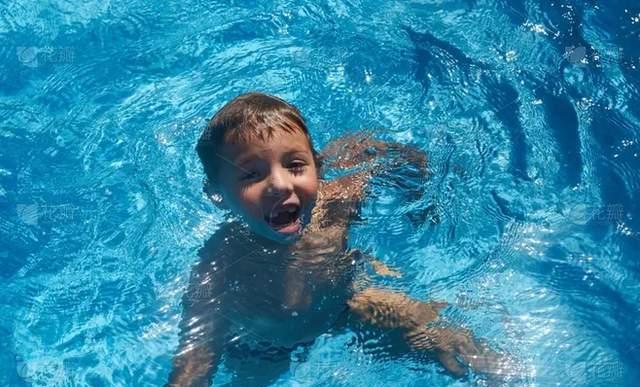The temperature is gradually rising, and more and more children playing with water are also increasing. Parents must pay attention to the safety of their children.

Some time ago, there was a drowning tragedy in Shenzhen, an 8-year-old little girl drowned in the landscape lake of the community, and the rescue was ineffective.
In June 2021, a 1.5-year-old child in Shenzhen drowned in his home. The family used to store up the used water to flush the toilet, no one expected that only 20 centimeters of deep water would drown the child in it, although the life was saved after rescue, but it still caused serious brain damage.
According to statistics from the Ministry of Public Security and the National Health and Family Planning Commission, drowning has become the number one killer of accidental deaths of children on the mainland, with about 57,000 people drowning across the country every year, of which 56.04% are children under the age of 14.
In addition, more than half of the children drowned no more than 23 meters away from their parents, and the shortest distance was less than 2 meters.
Parents are the first barrier to protect the safety of their children.
The most immediate consequence of drowning is lack of oxygen, which can also affect brain, heart and other organ tissues.
The most easily overlooked is that after the child drowns, he cannot struggle and call for help, and it is difficult for parents to find dangerous conditions, thus missing the best time to rescue.
Therefore, when children are playing with water, if these situations occur, parents must pay attention to:
Constantly pat the water while swimming
In the imagination of many people, children drowning will sink in the water, but this is not the case.
In the event of drowning, the child will try to save himself, usually with his mouth and nose on the surface of the water, trying to breathe. At the same time, the body stands upright in the water, instinctively slapping the surface of the water with its arms, and the picture looks like playing with the water. And parents see that their children's mouth and nose are not drowned, and they will not consider drowning at all, so that tragedy comes.
There was a 6-year-old child in Hangzhou, drowning during a 1-on-1 personal training swimming lesson, when there were 4 lifeguards in the field, the nearest one was only 3 meters, but no one found it until 4 minutes after drowning, the child's grandmother found the abnormality.
There was no response to the shouting of names
If parents are unsure whether their child is playing with water or has drowned, they can be tempted by calling out their child's name.
Because if the child does drown, then due to panic and misinking (water entering the child's trachea), there is usually no way to respond and no call for help.
It should be noted that there is another special case, that is, infants and young children swimming with lifebuoys, after they flip in the pool, their arms cannot be slapped on the water, but if they look closely, they will see that the baby has a struggling action. Therefore, the lifebuoy is not really a universal "lifesaver", parents must not think that everything is fine because the child wears a lifebuoy, and ignore the child's state.
What should parents do if they find their child drowning?
Try not to panic
If the child drowns, the parents will definitely be in chaos, which is normal, but if you can't swim, don't jump into the water to save people, you may not be able to save the child, and it will increase the difficulty of rescue.
Check your child's condition
After the child is rescued, parents should immediately check the child's reaction and breathing, and at the same time call an ambulance or directly to the nearest hospital.
You can tell if your child is still responding by tapping the child's shoulder (over 1 year old) or the sole of his foot (within 1 year of age) and calling for a name, and carefully observing whether the child's chest and abdomen are undulating to judge breathing.
If you have a normal reaction, you can wait for an ambulance or drive to the hospital.
When there is no response but breathing, let the child stay on his side to prevent choking from clogging with vomit.
This is particularly critical when there is no response, no breathing, or only near-death wheezing, requiring immediate CPR.
Parents need to be reminded that all children who have experienced drowning, regardless of whether they have experienced respiratory and heartbeat arrest, must be sent to the hospital for examination at the first time.
Moreover, after drowning, no matter what form of "water control" is an absolutely wrong approach, which will not only delay the timing of cardiopulmonary resuscitation, but also increase the risk of aspiration.